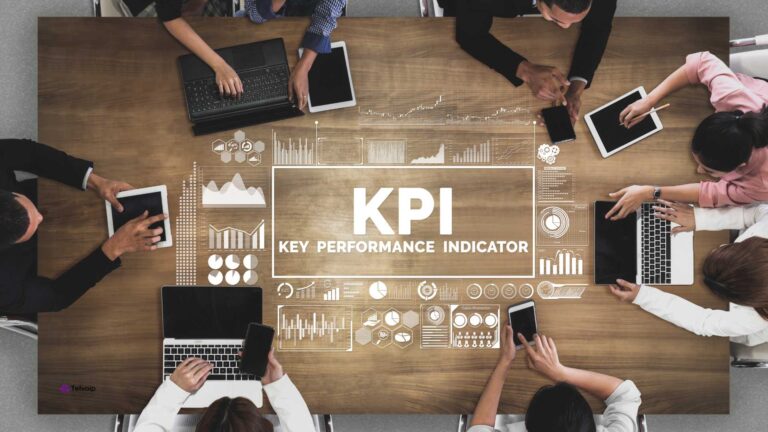Table of Contents
ToggleIntroduction
Payment analytics is a crucial tool for businesses to analyze their payment data, uncover insights that can drive revenue growth and improve overall business performance. Collecting, analyzing, and interpreting payment data allows businesses to gain a comprehensive understanding of their financial health, uncover opportunities for improvement, and make data-driven decisions to boost profitability. Leveraging payment analytics enables companies to optimize pricing strategies, reduce costs, and maximize revenue potential in an increasingly competitive landscape.
What is Payment Analytics?
Payment analytics is the process of collecting, analyzing, and interpreting transaction data to derive actionable insights that enhance business performance, optimize payment processes, and improve financial strategies by understanding customer behavior, transaction patterns, and operational efficiency. This process involves utilizing advanced software tools to process large volumes of data, allowing businesses to identify key performance indicators that directly influence revenue.
The insights derived from payment analytics can inform various aspects of business operations, such as optimizing pricing strategies, enhancing customer experiences, and minimizing operational costs. Additionally, it empowers organizations to actively address potential issues, such as revenue leakage due to billing errors or fraudulent transactions, ensuring a healthier bottom line.
Why Payment Analytics Matters?
Data-Driven Decisions
Payment analytics provides a clear picture of customer behavior, spending patterns, and payment preferences. This knowledge allows businesses to develop more effective pricing strategies that align with market demand and customer willingness to pay.
Additionally, by understanding which marketing campaigns or channels are driving the most revenue, companies can optimize their marketing efforts to reach the right audience with the right message at the right time. Payment analytics can reveal areas of operational inefficiency, such as high payment processing fees or excessive fraud, enabling businesses to streamline processes and reduce costs.
Customer Insights
Payment analytics offers businesses insights into customer behavior, which is crucial for enhancing service offerings and boosting customer satisfaction. Analyzing payment data enables companies to identify spending patterns, payment preferences, and transaction histories, allowing them to tailor their services to meet their customers’ specific needs.
For instance, understanding which payment methods are favored by different segments of the customer base enables businesses to provide more convenient and preferred options, thereby enhancing the overall transaction experience.
Insights into spending habits can inform targeted marketing strategies, ensuring that promotions resonate with customers’ interests and behaviors. This level of personalization not only fosters customer loyalty but also encourages repeat business, ultimately leading to increased revenue.
Revenue Optimization
 Through analysis of payment data, businesses can effectively identify and address areas where they may be losing revenue, leading to enhanced financial performance. This process, known as revenue optimization, involves scrutinizing various factors such as payment processing fees, instances of fraud, and the efficiency of payment methods. Uncovering hidden costs associated with high processing fees allows companies to negotiate better terms with payment processors, thereby increasing their profit margins.
Through analysis of payment data, businesses can effectively identify and address areas where they may be losing revenue, leading to enhanced financial performance. This process, known as revenue optimization, involves scrutinizing various factors such as payment processing fees, instances of fraud, and the efficiency of payment methods. Uncovering hidden costs associated with high processing fees allows companies to negotiate better terms with payment processors, thereby increasing their profit margins.
Payment analytics can reveal patterns indicative of fraudulent transactions, allowing businesses to implement preventive measures that minimize losses. Optimizing payment methods, such as offering a wider variety of payment options or improving the reliability of payment gateways, allows companies to enhance the customer experience and reduce transaction failures.
Benefits of Payment Analytics
Improving Customer Service
 Payment analytics significantly enhances customer experience by providing insights that allow businesses to tailor their payment processes to meet customer expectations. One key aspect is the ability to offer personalized payment options; by analyzing payment data, businesses can identify the preferred payment methods of various customer segments, enabling them to present options that make transactions smoother and more convenient.
Payment analytics significantly enhances customer experience by providing insights that allow businesses to tailor their payment processes to meet customer expectations. One key aspect is the ability to offer personalized payment options; by analyzing payment data, businesses can identify the preferred payment methods of various customer segments, enabling them to present options that make transactions smoother and more convenient.
Payment analytics can pinpoint challenges in the payment process, allowing companies to streamline operations and reduce transaction times, which leads to faster, more efficient transactions that increase customer satisfaction and conversion rates. The proactive identification of potential issues such as frequently failing payment methods enables businesses to address problems before they impact customers, ensuring a seamless payment experience.
Optimizing Payment Processes
Payment analytics plays a crucial role in optimizing payment processes, enabling businesses to enhance efficiency and reduce costs. One of the primary ways it achieves this is through automating routine tasks; by identifying repetitive activities, such as sending payment reminders or processing refunds, businesses can implement automation solutions that not only expedite these processes but also minimize the risk of human error.
Payment analytics helps in reducing payment failures, which can significantly impact revenue and customer relationships. Analyzing transaction data enables businesses to pinpoint the causes of payment failures and take corrective actions, such as offering alternative payment methods or enhancing the reliability of payment gateways.
Customizing Payment Solutions
Businesses can leverage the power of payment analytics to tailor their payment solutions to the unique needs of their customers and industry. Analyzing customer preferences and behaviors allows companies to offer tailored payment methods that align with the most popular options among their target audience, making transactions more convenient and seamless. Payment analytics also enables businesses to provide flexible payment plans, catering to the diverse needs of customers who may prefer installment options or one-time payments.
This level of customization not only enhances the customer experience but also increases the likelihood of successful transactions. For companies operating in multiple regions, payment analytics can identify regional differences in payment preferences, allowing them to offer localized solutions that cater to the specific needs of customers in different markets.
Enhancing Fraud Detection
Payment analytics plays a crucial role in enhancing fraud detection for businesses, especially those operating in the online space. Advanced analytics solutions, by analyzing payment data in real-time, can monitor transactions and swiftly identify suspicious patterns or behaviors indicative of fraudulent activity. This enables companies to detect and respond to fraud as it occurs, significantly reducing the risk of substantial financial losses and reputational damage.
Payment analytics leverages machine learning algorithms that continuously learn from past fraud incidents, allowing them to adapt and identify new, emerging threats. Recognizing common patterns used by fraudsters allows these sophisticated algorithms to flag suspicious transactions before they result in substantial harm.
Leveraging Real-Time Data
Payment analytics provides businesses with real-time insights into their financial transactions, enabling them to respond immediately to changes in customer behavior, market conditions, or potential issues. Real-time payment analytics enables dynamic pricing strategies that adjust prices based on demand, competition, or other market factors, helping businesses maximize revenue during peak times and remain competitive during slower periods. Up-to-the-minute information about cash flow helps businesses, especially small ones, manage their finances more effectively and maintain a healthy liquidity position.
Forecasting and Planning
Payment analytics significantly enhances forecasting and planning by providing businesses with the data necessary to predict future trends and make informed strategic decisions. Analyzing historical payment data enables companies to create more accurate revenue projections, which are crucial for setting realistic sales targets, budgeting, and overall financial planning.
Payment analytics facilitates trend analysis, allowing businesses to identify seasonal fluctuations in sales or shifts in customer payment preferences. This understanding enables more effective planning of marketing campaigns, inventory management, and staffing needs.
Conclusion
Payment analytics is a powerful tool that helps businesses optimize revenue, enhance customer experiences, and drive success. Utilizing data-driven insights allows companies to make informed decisions, resulting in enhanced pricing strategies, more effective marketing campaigns, and improved operational efficiency. Telvoip’s payment links feature, which provides customizable payment links, tracks key metrics like conversion rates, average order values, and customer behavior.
This data-driven approach optimizes payment processes, reduces abandoned carts, and enhances the customer journey. Embracing payment analytics and innovative solutions such as Telvoip’s payment links enables organizations to stay ahead of the curve, adapt to market changes, and achieve sustainable growth.








